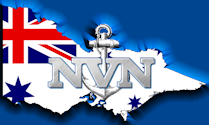Rear Admiral Galfry George Ormond GATACRE CBE DSO DSC* MiD
 Rear Admiral Galfry George Ormond Gatacre, CBE, DSO, DSC* MiD (née Gataker) was a senior officer in the Royal
Australian Navy, who also played first-class cricket.
His Naval career began in 1921 and lasted until his
retirement in 1964, during which time he spent a number of
years on secondment to the Royal Navy. He saw action
in both the Second World War and the Korean War, for which
he was awarded the Distinguished Service Order and twice
awarded the
Distinguished Service Cross. He also played
first-class cricket in England for the Royal Navy Cricket
Club. He was made a Commander of the Order of the
British Empire in 1960 and, after retirement from the Navy,
he became a businessman. Rear Admiral Galfry George Ormond Gatacre, CBE, DSO, DSC* MiD (née Gataker) was a senior officer in the Royal
Australian Navy, who also played first-class cricket.
His Naval career began in 1921 and lasted until his
retirement in 1964, during which time he spent a number of
years on secondment to the Royal Navy. He saw action
in both the Second World War and the Korean War, for which
he was awarded the Distinguished Service Order and twice
awarded the
Distinguished Service Cross. He also played
first-class cricket in England for the Royal Navy Cricket
Club. He was made a Commander of the Order of the
British Empire in 1960 and, after retirement from the Navy,
he became a businessman.
Early life and naval career
The son of Reginald Henry Winchcombe Gataker, an
English-born farmer, and his Scottish-born wife, Christian
Esson (née Gordon), Galfry George Ormond Gataker was born at
Wooroolin, Queensland, on 11 June 1907. He was home
schooled, before attending the Church of England Grammar
School in Brisbane, and subsequently the Brisbane Boys'
College. He was inspired to the join the RAN after completing his education by his
godfather, Admiral Sir Reginald Tupper. He entered
into the Royal Australian Naval College as a cadet
Midshipman in 1921, from which he graduated in 1924 as one
of only two chief cadet captains in his final year.
'Gat', as he was affectionately known, was appointed as a Midshipman in May 1925, before
promotion to the rank of Sub-Lieutenant in April 1928.
During this period he served on a variety of RAN and Royal
Navy ships in the Far East and the Mediterranean, before
undergoing further training in Britain. While in
Britain he made a single appearance in first-class cricket
for the Royal Navy against the Royal Air Force at The Oval
in 1928. Batting twice in the match, he was dismissed
by Reginald Fulljames in both innings, for scores of 12 and
7, while with the ball he took a single wicket in the Royal
Air Force first-innings, when he dismissed their captain
Charles Blount. A noted spin bowler, Gataker came to
the attention of state cricket coaches in Australia, but
never pursued the opportunity to play at a higher level.
Following his training in Britain, Gataker was posted to
HMAS Canberra in November 1928 as a Watchkeeping
Officer. He was promoted to the rank of Lieutenant in
January 1930, while in May 1931 he was made the Flag
Lieutenant to Leonard Holbrook, the Commodore commanding the
Australian Squadron. He changed the spelling of his
surname to 'Gatacre' by deed poll in 1930.
Royal Navy service and Second World War
On 16 January 1933 at the Presbyterian Church, Mosman,
Sydney, Gatacre married Winifred 'Wendy’ May Palmer
(d.1978); they were to have a son and a daughter. The
Gatacres soon sailed for Britain, for 'Gat' to undertake specialist navigation
training. He completed his advanced navigational course
in 1937, having undertaken his training aboard HMS Harebell
and HMAS Stuart, including navigational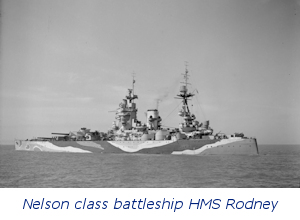 training off the
Spanish coast during the Spanish Civil War. training off the
Spanish coast during the Spanish Civil War.
In late
1937 he joined
the crew of HMS Devonshire and was promoted
to the rank of Lieutenant Commander in January 1938. He
was serving aboard HMS Edinburgh at the start of the Second
World War, and later served aboard HMS Renown, HMS
Nelson
and HMS Rodney. He was the navigator aboard HMS
Rodney and was involved in the hunt for and sinking
of the German battleship Bismarck. During the hunt, he
was awarded the Distinguished Service Cross in the 1941
Birthday Honours:
'For mastery, determination and skill in action against
the German battleship Bismarck. This officer, serving
in H.M.S. Rodney was with the Captain on the compass
platform throughout the action and he handled the ship,
under the Captain's instruction, with coolness and skill.
His advice was on several occasions invaluable and his
bearing under fire in every way admirable. By his
accurate navigation and judicious selection for courses to
steer he was largely responsible that H.M.S. Rodney was in
such favourable position relative to Bismarck on the night
of 26 May 1941.'
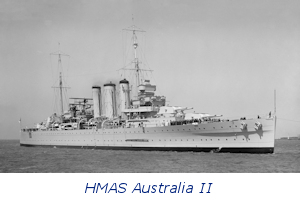 Promoted to Commander in December 1941, Gatacre returned to
Australia in April 1942 and the next month was appointed to
HMAS Australia as Staff Officer (Operations and
Intelligence) to the Commander of the Australian Squadron.
He served with distinction in this demanding role under
three different Commanders for more than two years,
participating in many operations in the South-West Pacific
theatre, including the battles of Savo Island and the
Eastern Solomons, and most of the amphibious landings along
the New Guinea coastline. Promoted to Commander in December 1941, Gatacre returned to
Australia in April 1942 and the next month was appointed to
HMAS Australia as Staff Officer (Operations and
Intelligence) to the Commander of the Australian Squadron.
He served with distinction in this demanding role under
three different Commanders for more than two years,
participating in many operations in the South-West Pacific
theatre, including the battles of Savo Island and the
Eastern Solomons, and most of the amphibious landings along
the New Guinea coastline.
In 1943, he was awarded a
Bar to his DSC:
'For skill, resolution and coolness in H.M.A.S. Australia
during operations in the Solomon Islands. During the
period 16 July to 31 August 1942, when Task Force 44 was
engaged in operations for the occupation of Guadalcanal and
Tulagi, Commander Gatacre as Staff Officer (Operations)
proved himself to be a Staff Officer of the highest order
throughout the operations, during which many unusual and
complicated situations arose. He displayed enterprise
and skill combined with great stamina and capacity for work.
He is quick in action and displays sound judgement and is
considered to be quite outstanding.'
In August 1944 he was given his first
shore job after eleven years of marriage and over twenty
years in the RAN. He was the Staff Officer for
post-hostilities planning at Navy Office, Melbourne, for a
year before being placed in command of the destroyer HMAS
Arunta in August 1945. Arunta operated throughout the Asian
region assisting with demobilisation and the British
Commonwealth Occupation Force in Japan.
Korean War and later service
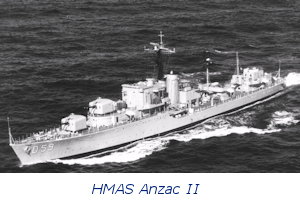 Gatacre was posted to Flinders Naval Depot, Westernport,
Victoria, in October 1947. Promoted to Captain in June 1948,
he became Deputy Chief of Naval Staff (DCNS) at Navy Office in
October. Gatacre was posted to Flinders Naval Depot, Westernport,
Victoria, in October 1947. Promoted to Captain in June 1948,
he became Deputy Chief of Naval Staff (DCNS) at Navy Office in
October.
In 1951 he attended a course at the Imperial Defence
College in London, after which he was appointed the
first Captain of the newly commissioned HMAS Anzac and
Commanding Officer of the 10th Destroyer Squadron in
February 1952. From September, Anzac patrolled off the
east and west coasts of Korea and spent more time in the
combat area than any other Commonwealth ship. Gatacre, as a
senior Captain, also commanded a number of Task Units and
Task Forces at various times. In 1953 Gatacre
subsequently added the Distinguished Service Order to his accolades:
'for distinguished service in operations in Korean waters,
whilst commanding H.M.A.S. Anzac'
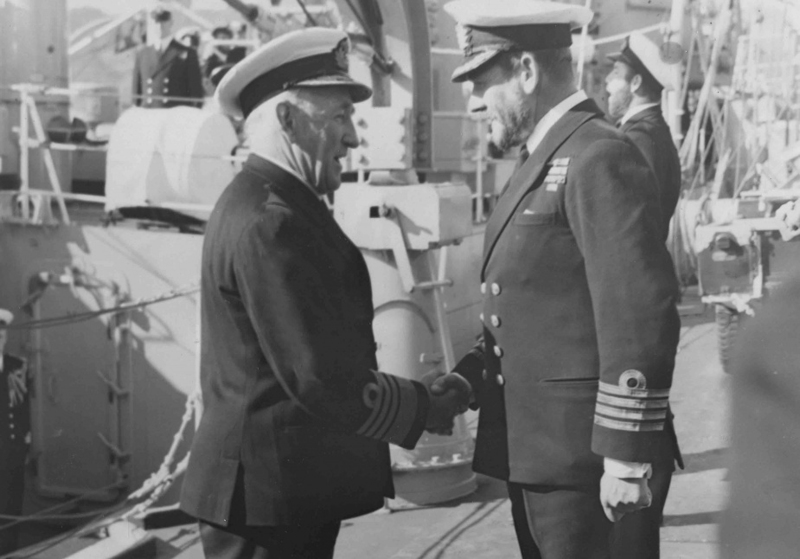
Captain Gatacre welcomes
First Sea Lord Sir Rhoderick McGrigor onboard HMAS Anzac
(II) in Korea.
Gatacre was sent to the United States in July 1953, where he
served for two years as the Australian Naval Attaché in
Washington, before being appointed Commanding Officer of the
newly commissioned HMAS Melbourne in October 1955. He again
held the position of DCNS in January
1957, owing to a lack of experienced senior officers in the
RAN at the time, before being promoted to the rank of Rear
Admiral in June 1958, and being made the Flag Officer
Commanding Her Majesty's Australian Fleet in January 1959, the most
senior seagoing post in the RAN.
He was appointed a
Commander of the Order of the British Empire (CBE) in the 1960 New
Year Honours:
'In recognition of his long and distinguished service to
the Royal Australian Navy.'
In January 1960, he was sent to Washington
as head of the Australian Joint Services Staff, a position
he held for two years. Returning in 1962, he became the
second member of the Australian Commonwealth Naval Board and
was appointed Flag Officer-in-Charge, East Australia Area in
July 1962. In February 1964, units under his command
were involved in the rescue of survivors of the
HMAS Melbourne – HMAS Voyager collision.
Gatacre retired from the RAN on 10 June 1964 and began a
career in business. He was a director of:
-
RSL Permanent
Building Society Ltd
-
Elliott-Automation (Pty) Ltd
(later the General Electric Co of Australia Ltd), for which
he was also a representative of the Defence and Aerospace
arm.
A keen golfer, he played mostly at the Royal Sydney
Golf Club. His memoirs, ‘Reports of Proceedings’, were
published in 1982.
Survived by his son, he died on 11 August
1983 at Eastwood, NSW, aged 76.

The mounted group of twelve miniature dress medals worn
by
Rear Admiral G.G.O. Gatacre, CBE, DSO, DSC*, MiD
Sources:
Wikipedia
Spink Auction House
Seapower Centre Australia
Australian Dictionary of Biography
Compiled by Laurie Pegler
|
